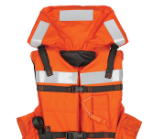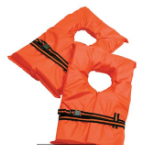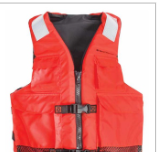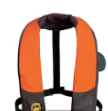PE 4 Lesson 1 3rd Quarter
1/55
Earn XP
Description and Tags
Water Safety
Name | Mastery | Learn | Test | Matching | Spaced |
|---|
No study sessions yet.
56 Terms
Drowning
One of the leading cause of death for children and adult alike when performing aquatic activities
Drowning
this can be an accident or an emergency in the water
lifeguards
Even if ? are present, you (or another responsible adult) should stay with your children.
water watcher
Be a “?” – provide close and constant attention to children you are supervising; avoid distractions including cell phones.
permission
Teach children to always ask ? to go near water
life jackets
Children, inexperienced swimmers, and all boaters should wear approved ?
beach
At the ?, always swim in a lifeguarded area
water
Fence pools and spas with adequate barriers, including four-sided fencing that separates the ? from the house.
Risks and Precautions
Know the ? & Take Sensible ? – Even If You’re a Strong Swimmer
buddy
Always swim with a ?
alcohol or drugs
Don’t use ? (including certain prescription medications) before or while swimming, diving or supervising swimmers
life jacket
Wear an approved ? when boating or fishing, even if you don’t intend to enter the water.

Type 1
What type of life jacket is this?
Type 2
What type of life jacket is this?

Type 3
What type of life jacket is this?

Type 4
What type of life jacket is this?

Type 5
What type of life jacket is this?

Water competency
a way of improving water safety for yourself and those around you through avoiding common dangers, developing fundamental water safety skills to make you safer in and around the water, and knowing how to prevent and respond to drowning emergencies
water smarts, swimming skills, helping others
What are the water competency?
water smarts
Take these sensible precautions when you’re around water (even if you’re not planning to swim)
water smarts
Know your limitations, including physical fitness, medical conditions (water smarts, swimming skills, helping others)
water smarts
Never swim alone; swim with lifeguards and/or water watchers present.(water smarts, swimming skills, helping others)
water smarts
Wear an approved life jacket appropriate for your weight and size and the water activity. Always wear a life jacket while boating, regardless of swimming skill. (water smarts, swimming skills, helping others)
water smarts
Swim sober. (water smarts, swimming skills, helping others)
water smarts
Understand the dangers of hyperventilation and hypoxic blackout. (water smarts, swimming skills, helping others)
water smarts
Know how to call for help (water smarts, swimming skills, helping others)
water smarts
Understand and adjust for the unique risks of the water environment you are in (water smarts, swimming skills, helping others)
5
How many swimming skills are there?
swimming skills
Enter water that’s over your head, then return to the surface (water smarts, swimming skills, helping others)
swimming skills
Float or tread water for at least 1 minute (water smarts, swimming skills, helping others)
swimming skills
Turn over and turn around in the water (water smarts, swimming skills, helping others)
swimming skills
Swim at least 25 yards (water smarts, swimming skills, helping others)
swimming skills
Exit the water (water smarts, swimming skills, helping others)
helping others
These actions will help your family avoid emergencies – and help you respond if an emergency occurs:
helping others
Paying close attention to children or weak swimmers you are supervising in or near water (water smarts, swimming skills, helping others)
helping others
Knowing the signs that someone is drowning (water smarts, swimming skills, helping others)
helping others
Knowing ways to safely assist a drowning person, such as “reach or throw, don’t go” (water smarts, swimming skills, helping others)
helping others
Knowing CPR and first aid (water smarts, swimming skills, helping others)
protection
Layers of ? are essential to help prevent drowning
lifeguarded
always swim in a ? area
supervising
Provide close and constant attention to children you are ? in or near water
learn
? swimming and water safety survival skills
life jackets
Children, inexperience swimmers and all boaters should wear approved ?
water
If a child is missing, check the ? first: seconds count in preventing death or disability!
lifeguard
Alert the ?, if one is present
shout
Recognize the signs of someone in trouble and ? for help.
down
swimmer needs immediate help if they: Are motionless and face ? in the water
vertical
swimmer needs immediate help if they: Are ? in the water but unable to move or tread water.
forward
swimmer needs immediate help if they: Are not making ? progress in the water.
Facing Shore, Mouth at Water Level, Head Tilted Back, Body Vertical, Climbing Ladder Motion
What are the signs of drowning?
water
Rescue and remove the person from the ? (without putting yourself in danger).
EMS and 2
Ask someone to call ?. If alone, give ? minutes of care, then call ?
emergency medical services
EMS meaning
CPR
Begin rescue breathing and ?.
Reach and Throw
Rescue and remove the person from the water without putting yourself in danger (?)
1, 4, 3, 2
Arrange these from 1-4
_ Recognize the signs of someone in trouble and shout for help.
_ Begin rescue breathing and CPR.
_ Ask someone to call emergency medical services (EMS). If alone give two minutes of care, then call EMS.
_ Rescue and remove the person from the water without putting yourself in danger (Reach and Throw)